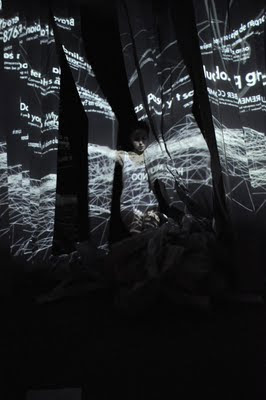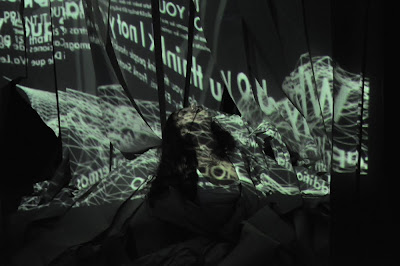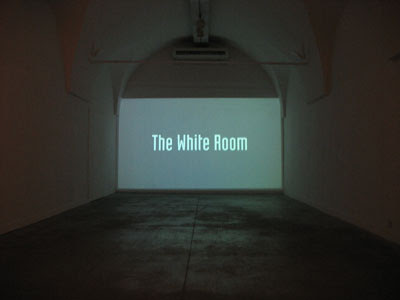
Biographical information
I was born in Buenos Aires in 1975. Since I was three years old I have been learning corporal expression and different dance techniques. I studied humanities and obtained a degree at the University of Buenos Aires (UBA). Also at UBA I studied Combined Arts and Stage Direction.
Since 1998 I have been producing my own performances and choreographies and directing my own works. At present I work as a contemporary dance teacher training students in Fusion Dance, a technique I developed. The purpose of Fusion Dance is to take the body in all its intellectual, emotional and physical abilities as a media of expression. I teach at the UBA and coordinate the physical aspects of therapy for patients with mental health problems helping them to rebuild social boundaries. Other experiences include coaching to: the United Nations Development Program in Argentina (UNDP), experimental theater groups, the Balearic Island’s professional gymnastic team. I have also given various workshops at the Cervantes Institute, London, in 2006.
In 1998 moved by the desire of finding my own art language manifesto I founded an interdisciplinary, investigative art group called Pilotea el Rayo. The main goals and objectives are to stimulate the spectator’s senses taking them out of the passive role they usually play in their seats.
In 2000, emerging from this I created “Obertura en Deconstrucción”, where the audience is taken by surprise and moved through the scene.
In 2002, along the same lines, I created “A-un ahí” about personal holocaust-inspired by the argentine social crisis in 2001.
I am grateful for the support I received through my career from the University of Buenos Aires (UBA), the students federation of the UBA (FUBA), the Art History Museum(MNBA), the French Embassy, the Holocaust Museum and the Cultural Secretary of the Argentinean Nation. I have performed some of my work at the ‘Casa de Cultura’ at the city hall of Buenos Aires, the Public School of Drama and Art, the Cultural Centre of Recoleta, and also at landmarks in Buenos Aires such as the `Obelisco´, the Wussmann Gallery, The House of Lecture of the city hall and Chela.
One of my recent pieces of work is “ur…gente Mar”- ‘UrBAn Interruption’ was inspired by the new wave of demonstrations that has hit the city of Buenos Aires since the 2001 social crisis. These demonstrations were a way of expressing social discontent, and addressed the need of citizens to show their feelings in public spaces. My intention at the time was to capture this identity and carry out an urban intervention through different artistic expressions to reach out to people in the same space where the demonstrations have taken place: the streets. I wanted to show that this same public space, which has turned into a place of a constant and on going display of social demonstrations and of sadness and anger, could also be a place of celebration. I wanted to give the people who pass through those same streets a homage to their will to ‘keep on going’, by treating them to a show of music and dance. Furthermore, the overall objective of the ‘UrBAn Interruption’ was to take the people of Buenos Aires by surprise in the urban space they walk along everyday. The visual impact given by the choreography consisted of a march-like dance. Moreover this visual transformation of the urban landscape was enabled by the sound of the Gorecky Third Symphony, played by the Tres de Febrero Symphonic Orchestra at the Obelisco on 22nd of December 2005, and also at Figueroa Alcorta Av. at the steps of the Law University of the UBA on 29th of October of the same year.
One of my creations was a work specifically created for an ICA event in London, the Discovering Latin America Second Festival called ‘Rhythms’. With “The White Room” I aimed to reveal the inner thoughts and feelings of minds in a foreign place and the sense of living abroad. In the search of singularity, a contemporary philosophical theme, we humans feel like foreigners everywhere, so “where is our home?” is one of the questions I addressed with the language of dance, visual images and sound effects. “The White Room”, the trailer was exhibited in advance at the Recoleta Cultural Centre from May 19 to June 4; 2006. It was finally shown and performed by myself at the Institute of Contemporary Arts (ICA) of London late in 2006. The same year I choreographed and performed “Variaciones sobre girar Hondo” where I feel I established my choreographic language. The name Girar Hondo indicates the medullar importance of a vocabulary that has our footprint in the deepest being and that it’s translated by the body into movement.
We have presented it at the General Direction of Museums of Buenos Aires. The variations were specifically created to be performed outside. I was joined by an ensemble of ten electronic musicians.
In 2008 I choreographed and performed “Viento sin Norte”, in which I made a dance intervention in a video installation for the recognized visual artist, Horacio Zabala. We have presented it at Wuusmann Art Gallery.
Most recently I have created “Matra”-a performance for mother and daughter/son and mirror. It was a creation for the House of Lecture of the City Hall in May 2009, Buenos Aires, in May 2009.
My last performance was a dance theater improvisation for “Residua”. “Residua” is an interactive installation that allows the audience to participate sending text messages that are on the spot integrated in the installation. This piece was created by award winning artists Alberti and Nonino. Residua has been taken place at the Future Festival at Chela, Buenos Aires, (hi tech multidisciplinary space) in May of 2009.
Currently, I am working on three projects: “Main Station”- a public intervention in main train stations around the world, London Waterloo is likely to be the first space. A silent and quiet action will happen in contrast with the manic environment of the crowed station-space. Some of the aims of Main Station are to unveil emptiness between movements; and to turn the invisible into real, an unexpected experience for commuters. The second one is “Sentido”- an interactive performance in which the spectator is going to guide the movements of the dancer by pulsing a sensor. These movements will be de-codified into light and sound. As a result of this, an unique choreography will be made by the interaction of the spectator and the performer. And the last one is Caer aca, a massive multimedia theatre designed for living the experience of being promenaded by the spectator’s steps. Caer aca will use the latest technology to give the spectator the feeling of immersion into the experience of turning the inner truth into reality. Caer aca tells the story of falling as a metaphor of a decision of staying alive jumping into desire.






 The White Room el trailer, exhibe a una performer pronta A despegar, un aeropuerto, puertas de traslados, ciudades veloces y composiciones electrónicas más sonidos de trenes y aleteos de palomas atraviesan el blanco ascético donde la coreografía se despliega, en este primer instante, en clave de partida.
The White Room el trailer, exhibe a una performer pronta A despegar, un aeropuerto, puertas de traslados, ciudades veloces y composiciones electrónicas más sonidos de trenes y aleteos de palomas atraviesan el blanco ascético donde la coreografía se despliega, en este primer instante, en clave de partida.









.JPG)